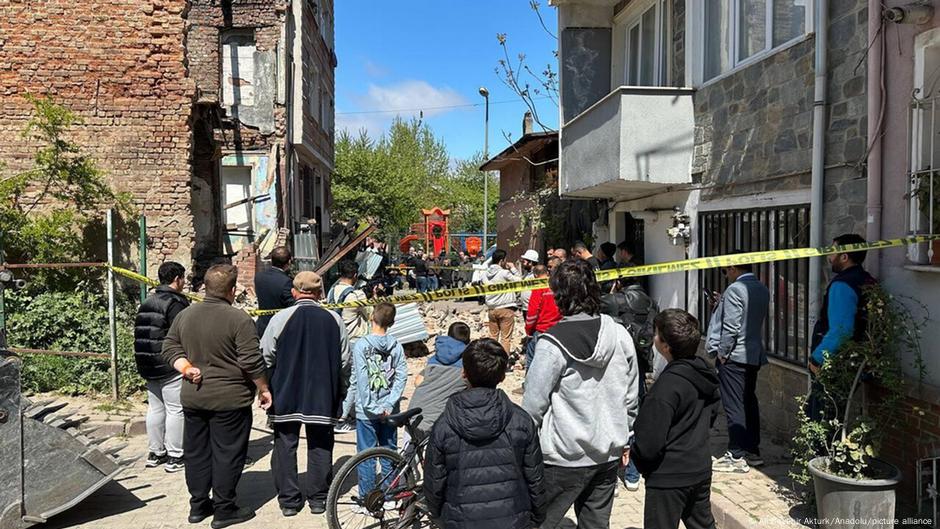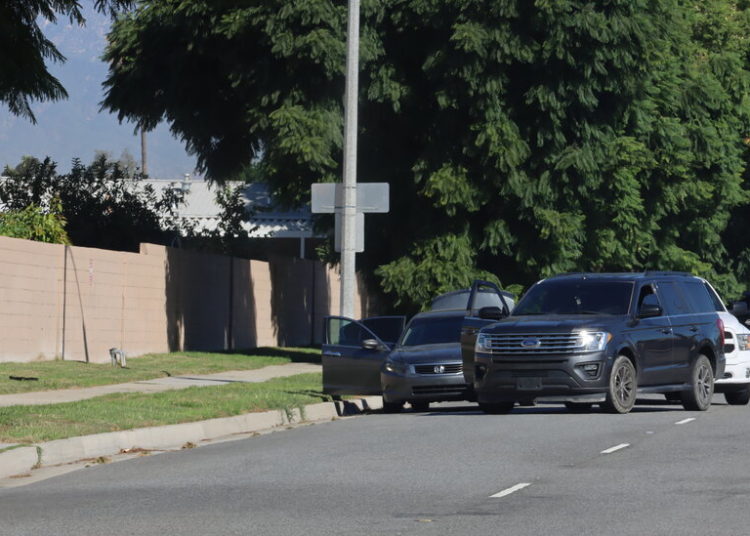Istanbul, Turkey’s largest city, was on Wednesday. Over 150 people were injured when they jumped or attempted to jump from buildings, Istanbul’s governor Davut Gul said, adding that “their injuries were not life-threatening” and nobody had died in the quake.
Following events like this, images and videos begin to circulate on social media — content creators are eager to gain views and increase their number of followers. However, a study shows that misinformation during and after natural disasters often leads to panic and hinders effective disaster management.
DW’s research shows that many videos circulating online following the earthquake in do not depict the recent event. Here are three examples.
AI-generated images circulating
Claim: This viral TikTok video shows a torn-up street, destroyed buildings and a collapsed bridge. The text in the video reads “Turkey 6.2,” while the caption states, “large earthquake hits off the coast of Turkey.” This suggests the video is related to the latest earthquake on April 23.
Fake
This video is AI-generated, evident when looking closely at several details. For instance, at the beginning of the video, on the left-hand side, the top of a streetlamp appears and then disappears, while the people at the bottom of the video do not move at all. Seconds later, a man on the left, purportedly standing in front of a collapsed building, can be seen with a blurry arm that vanishes and then reappears.
Additionally, the creator marked the video as being AI-generated, which many viewers overlooked. Comments such as “Is it real?,” “Pray for Turkey,” and “Stay strong Turkey” suggest that users believe the footage to be authentic.
In breaking news situations, such as natural disasters, it’s common for AI-generated videos to almost immediately begin circulating online. DW’s fact-checking team observed similar patterns earlier this year.
Old earthquake videos reappear
Claim: This video allegedly shows the dramatic collapse of a tall building in Istanbul, with many people running away. The caption says it depicts the earthquake in Istanbul, and the video was posted on April 23. Less than 24 hours after the quake, it had garnered over 5 million views.
DW fact check: False
More than 3,000 people commented on the video, with many believing it depicts the latest earthquake in Istanbul. However, that is not the case. A reverse image search shows that the video dates back to February 6, 2023. Back then, a magnitude 7.8 earthquake struck . The epicenter was close to the Syrian border. More than 56,000 people were killed and hundreds of thousands displaced. In the 2023 disaster many buildings crumbled to dust, raising concerns about construction safety standards.
Real earthquake ruins, but an old image
Claim: “My deepest condolences to the people of Turkey after the devastating earthquake in Istanbul. I stand with all those affected by this tragedy. Sending thoughts and prayers to the families who lost loved ones and to everyone impacted. Stay strong, Turkey,” a user posted on X, sharing a bird’s-eye view photo which shows many collapsed buildings.
DW fact check: False
A reverse image search confirms that the image is not related to the recent earthquake in Istanbul. Instead, it dates back to the earthquake in Turkey and Syria in February 2023. The earliest found search result traces the image to February 6, 2023. It shows destroyed buildings in Hatay, a southern Turkish province bordering Syria.
Following the earthquake in Turkey, misleading, fake and outdated content has spread rapidly online. With ongoing aftershocks in Istanbul, further false claims and images are likely to surface.
Claudia Dehn contributed to this article.
Edited by: Tetyana Klug
The post Fact check: Fake videos falsely linked to Turkey earthquake appeared first on Deutsche Welle.




